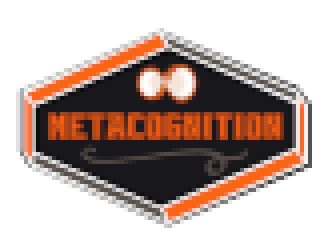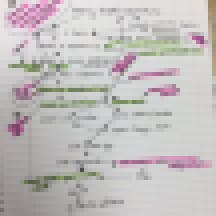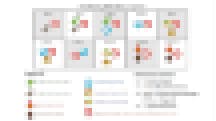What do students need to be successful? Why not ask them directly?
When we posed this question to our students at Bismarck Public Schools (BPS), here’s what some had to say to their teachers about what they need:
“Give me more time to explore my interest.”
“I like having a choice of what I get to do.”
“I like when it’s challenging, but not to the point where I would want to give up.”
“I like staying at my own pace and being able to go ahead, or stay a little behind.”
All the wishes they’ve expressed are pieces of a personalized learning environment. As it turns out, these students’ insights also match what we would like in our own development as teachers. So wouldn’t it might make sense that, to better prepare teachers to personalize learning for students, we should start by personalizing how we learn and grow in our profession as teachers?
Yet what does personalized professional development (PD) look like? Start by involving teachers in the design. This is exactly what we set out to do last spring when we applied for the North Dakota Educational Technology Council Build Grant to create the BPS Assessment Academy.
We invited a team of 35 teachers from seven schools to design summer workshops focused on innovating formative assessment practices. Our challenge was to personalize learning for ourselves so that we could personalize learning for our students. We asked ourselves what we needed to make professional development practical and useful on a personal level. What we discovered was that designing personalized learning gave us many insights into how to help both ourselves and our students.
Involve Learners Early and Often
Working collaboratively with teachers in planning and designing this PD workshop allowed us to leverage the collective wisdom of all our teachers. During these sessions, we challenged ourselves to gather resources and ideas to identify resources and spark discussion in the areas of:

- What are feedback strategies that help to increase student engagement?
- How do we deliver high quality and effective feedback?
- How might peer-to-peer feedback improve student achievement?
- How might we innovate formative assessment using peer-to-peer feedback?

- How might metacognitive strategies increase personal engagement?
- What are some ways to incorporate self-assessment and metacognitive strategies in our classrooms?
- How can we empower learners to give themselves (and each other) meaningful feedback?

- How can we use available tech tools to add efficiency when teaching and assessing foundational knowledge to allow more time for personalized application and extension activities?
- How can we use available tech tools to encourage and allow students to personalize their own experience?

- What tools and practices do we need to better engage students in this level of personalized learning?
- How can we design (and modify existing) activities that will allow students opportunities to show that they can apply what they learn in personalized ways?
Exploring these questions allowed us to both share and encourage the existing best practices in our district, and also ensure that new learning was in the appropriate zone of proximal development for our teachers to take steps that will actually become implemented in their classrooms..

Use Time As a Resource
One thing that the teachers on our design team let us know loudly and clearly was that they’re busy people (just like our students). That means the usefulness of our PD sessions would be directly impacted by their ability to access information and participate when and where it worked for them. As a result, we spent a lot of time building a flexible schedule that consisted of both face-to-face learning and work sessions as well as asynchronous online materials that could be mixed and matched to fit each teacher’s personal goals and needs.

Since our goal was implementing innovative practices (not just learning), we made sure to build time into the workshops that allowed teachers to work to achieve their own goals and relate them to new learning.To keep a pulse on their progress, we asked participants to track and share their learning using an Academy Goal Tracker.

Practice What We Preach (Or, How ‘Meta’ Can We Be?)
Designing personalized learning experiences for ourselves not only kept us in touch with the needs of our students, but also allowed us the rare opportunity to put ourselves in their shoes as we tested our potential innovations on ourselves. We held ourselves accountable by sharing our individual goals and action steps in their formative stages through engaging in multiple peer feedback protocols and revision loops.
Here again, the development of a robust asynchronous environment—which included interactive multimedia, online discussion forums, self-paced learning modules with automated feedback, and badges—was key. This allowed us opportunities to simulate how our teachers might go about developing flexible, personalized blended learning environments. Giving participants the opportunity to experience these from a student’s perspective allowed us to reflect on what types of asynchronous learning worked for us, and how we might leverage those to personalize learning for our students.
What’s Next?
Asking busy, busy teachers to plan workshops around innovative assessment practices that we only had limited experience with definitely required a serious dose of growth mindset. As one of our teachers put it, “What I appreciated most was that this format pushed me in my own beliefs about higher order thinking.”
It wasn’t always easy to wrap our heads around all the new ideas, but reflecting on what types of skills and supports we needed as teachers in doing this work taught us a lot about personalizing learning for students. Innovations that our teachers made (and implemented with students) included collaborative self-correcting assignments, self-paced online learning modules with automated feedback, and forms that facilitate student reflection and action on feedback.
Of the 86 teachers who participated in our summer workshops, several have become facilitators of “local” Assessment Academies at their home schools, helping to continue our model of personalized PD for personalizing student learning experiences.
Who knows what we’ll learn next, but one thing that we do know is that allowing for individual learning helps us to learn as a collective, and we will continue to try to personalize our PD because it pays dividends for teachers and students.


